
Global hospitality company Marriott (NASDAQ: MAR) reported Q1 CY2025 results beating Wall Street’s revenue expectations, with sales up 4.8% year on year to $6.26 billion. Its non-GAAP profit of $2.32 per share was 3% above analysts’ consensus estimates.
Is now the time to buy Marriott? Find out by accessing our full research report, it’s free.
Marriott (MAR) Q1 CY2025 Highlights:
- Revenue: $6.26 billion vs analyst estimates of $6.22 billion (4.8% year-on-year growth, 0.6% beat)
- Adjusted EPS: $2.32 vs analyst estimates of $2.25 (3% beat)
- Adjusted EBITDA: $1.22 billion vs analyst estimates of $1.18 billion (19.4% margin, 2.9% beat)
- Management reiterated its full-year Adjusted EPS guidance of $10.00 at the midpoint
- EBITDA guidance for the full year is $5.36 billion at the midpoint, in line with analyst expectations
- Operating Margin: 15.1%, in line with the same quarter last year
- RevPAR: $181.75 at quarter end, up 53.9% year on year
- Market Capitalization: $68.09 billion
Company Overview
Founded by J. Willard Marriott in 1927, Marriott International (NASDAQ: MAR) is a global hospitality company with a portfolio of over 7,000 properties and 30 brands, spanning 130+ countries and territories.
Sales Growth
A company’s long-term performance is an indicator of its overall quality. Any business can put up a good quarter or two, but the best consistently grow over the long haul. Over the last five years, Marriott grew its sales at a sluggish 4.2% compounded annual growth rate. This was below our standard for the consumer discretionary sector and is a tough starting point for our analysis.
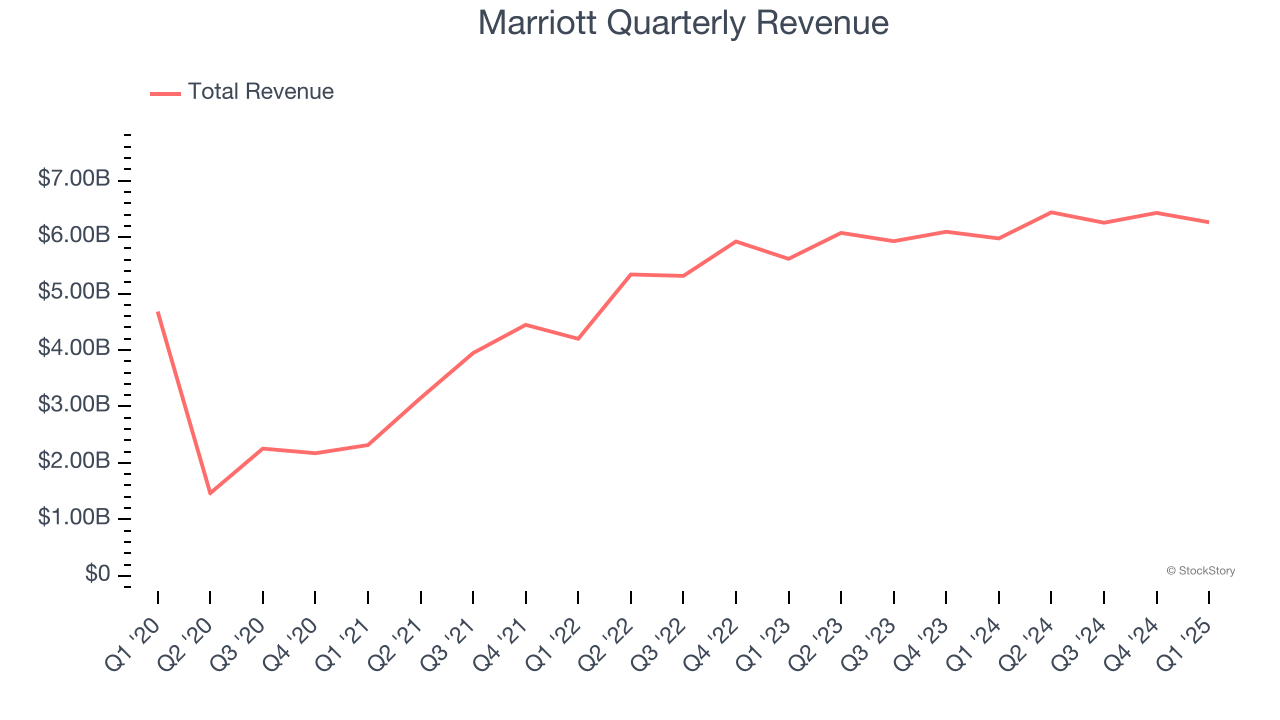
We at StockStory place the most emphasis on long-term growth, but within consumer discretionary, a stretched historical view may miss a company riding a successful new property or trend. Marriott’s annualized revenue growth of 7% over the last two years is above its five-year trend, but we were still disappointed by the results. 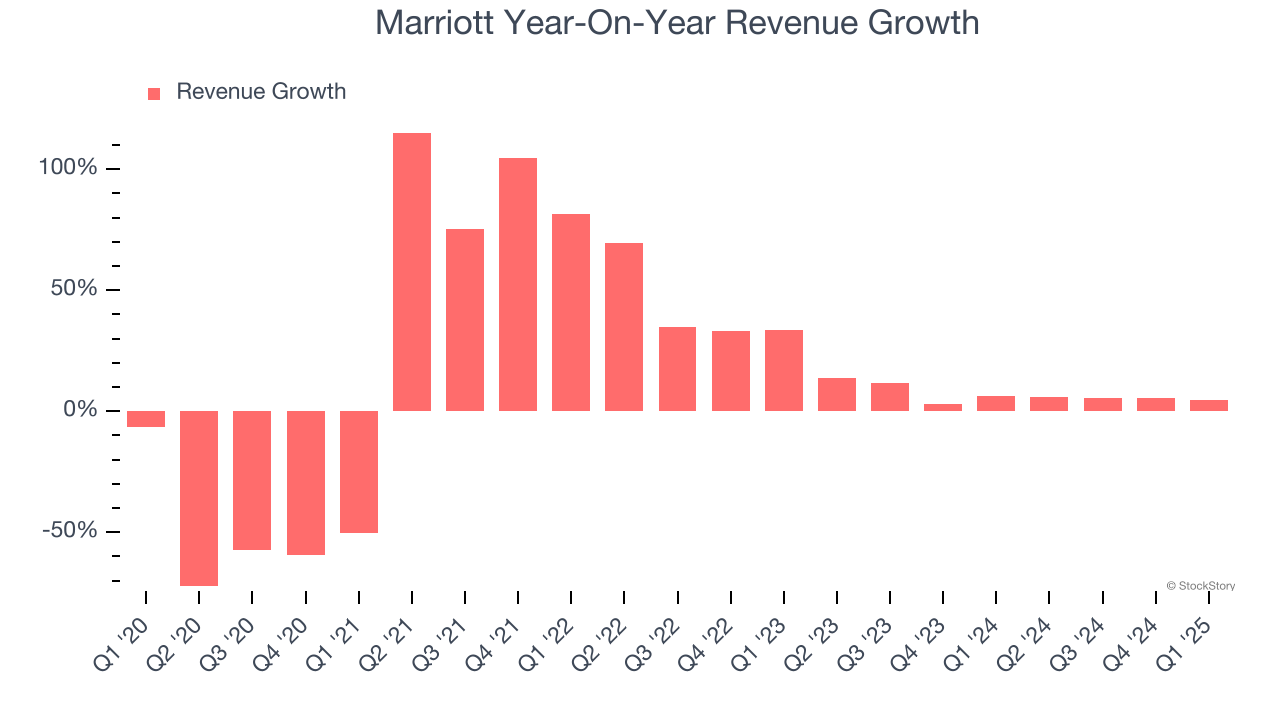
We can dig further into the company’s revenue dynamics by analyzing its revenue per available room, which clocked in at $181.75 this quarter and is a key metric accounting for daily rates and occupancy levels. Over the last two years, Marriott’s revenue per room averaged 11% year-on-year growth. Because this number is better than its revenue growth, we can see its room bookings outperformed its sales from other areas like restaurants, bars, and amenities. 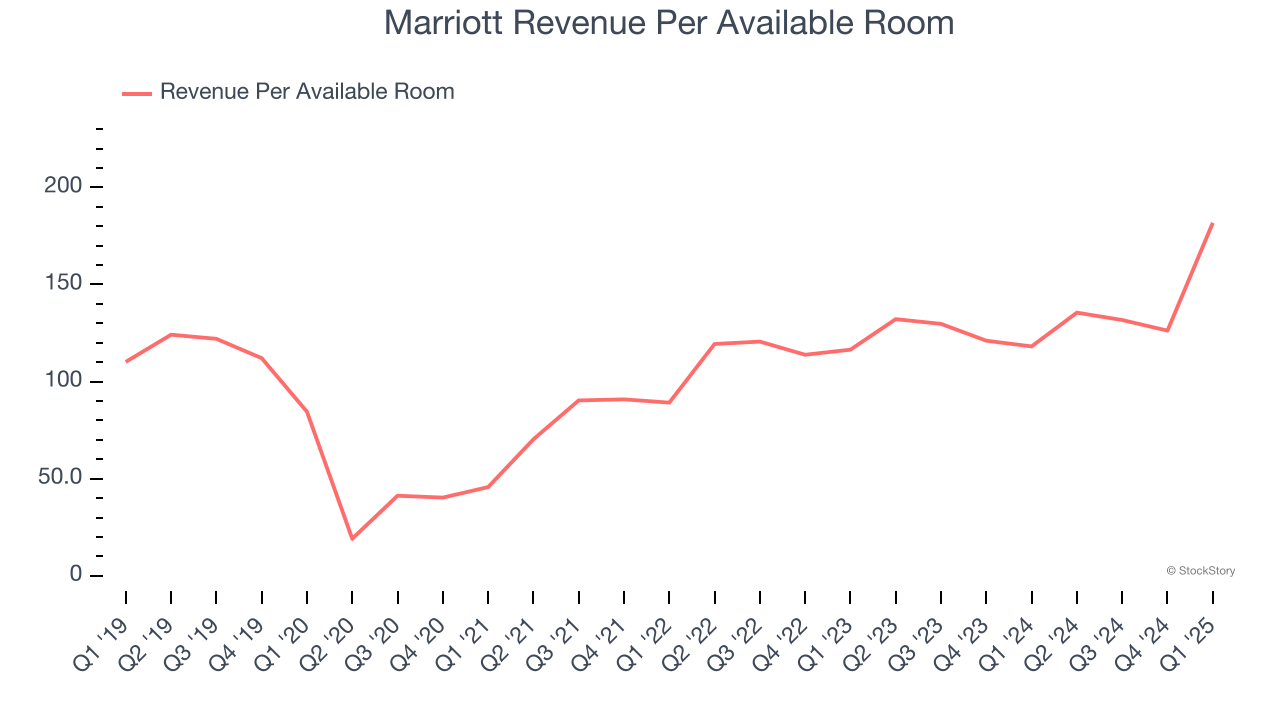
This quarter, Marriott reported modest year-on-year revenue growth of 4.8% but beat Wall Street’s estimates by 0.6%.
Looking ahead, sell-side analysts expect revenue to grow 4.7% over the next 12 months, a slight deceleration versus the last two years. This projection is underwhelming and suggests its products and services will see some demand headwinds.
Here at StockStory, we certainly understand the potential of thematic investing. Diverse winners from Microsoft (MSFT) to Alphabet (GOOG), Coca-Cola (KO) to Monster Beverage (MNST) could all have been identified as promising growth stories with a megatrend driving the growth. So, in that spirit, we’ve identified a relatively under-the-radar profitable growth stock benefiting from the rise of AI, available to you FREE via this link.
Operating Margin
Marriott’s operating margin might fluctuated slightly over the last 12 months but has generally stayed the same, averaging 15.4% over the last two years. This profitability was solid for a consumer discretionary business and shows it’s an efficient company that manages its expenses well.
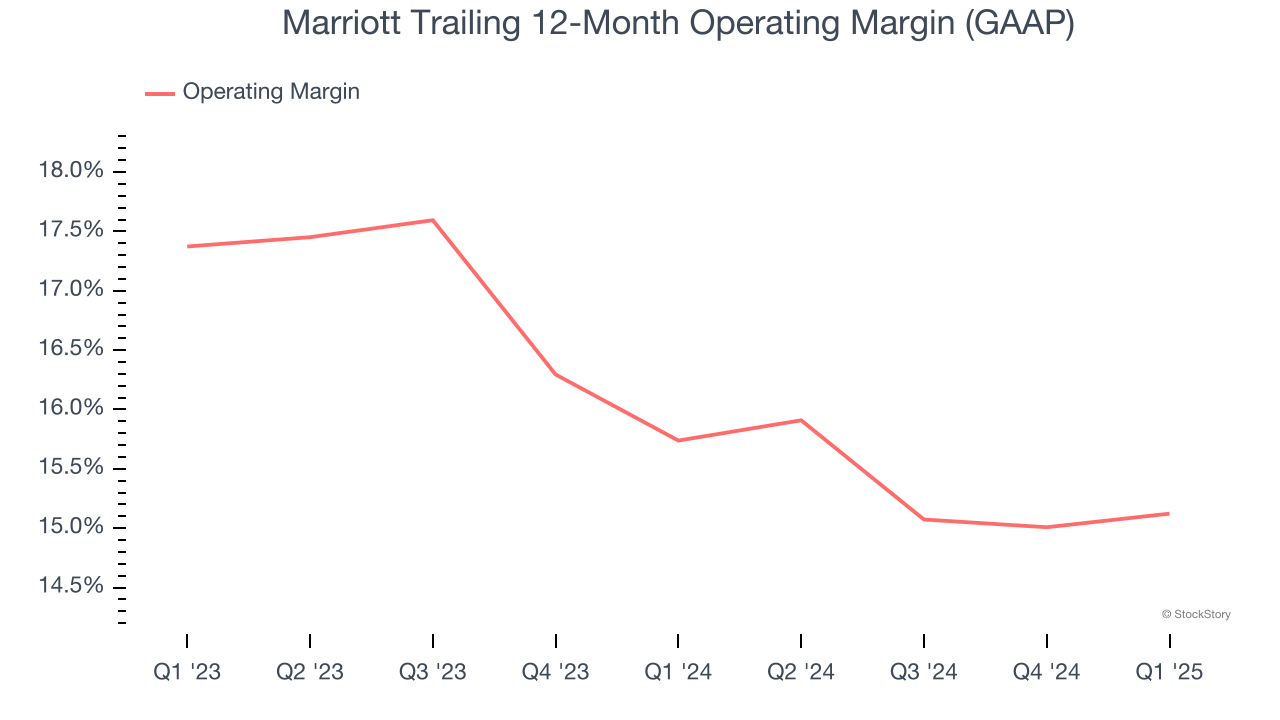
This quarter, Marriott generated an operating profit margin of 15.1%, in line with the same quarter last year. This indicates the company’s overall cost structure has been relatively stable.
Earnings Per Share
We track the long-term change in earnings per share (EPS) for the same reason as long-term revenue growth. Compared to revenue, however, EPS highlights whether a company’s growth is profitable.
Marriott’s EPS grew at a solid 13.4% compounded annual growth rate over the last five years, higher than its 4.2% annualized revenue growth. This tells us the company became more profitable on a per-share basis as it expanded.
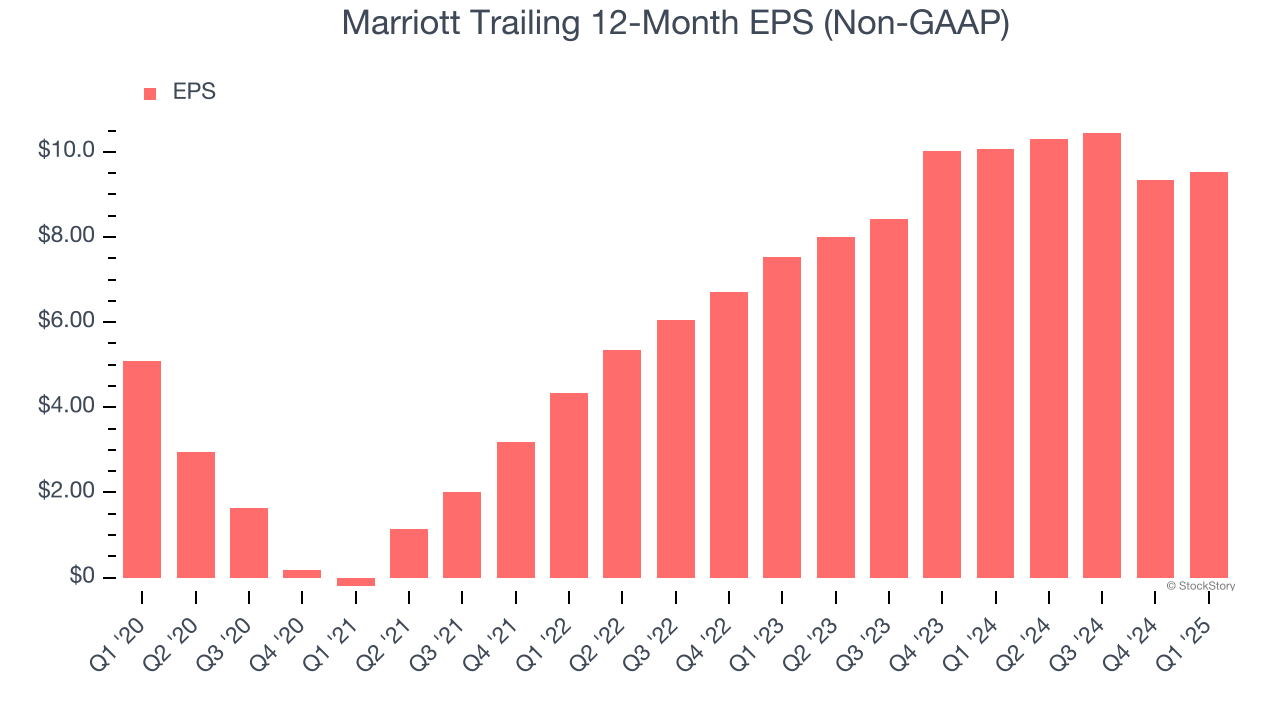
In Q1, Marriott reported EPS at $2.32, up from $2.13 in the same quarter last year. This print beat analysts’ estimates by 3%. Over the next 12 months, Wall Street expects Marriott’s full-year EPS of $9.53 to grow 8.1%.
Key Takeaways from Marriott’s Q1 Results
It was encouraging to see Marriott beat analysts’ EBITDA and EPS expectations this quarter. On the other hand, its EBITDA guidance for next quarter missed. Zooming out, we think this was a decent quarter featuring some areas of strength but also some blemishes. The stock remained flat at $247.27 immediately following the results.
Should you buy the stock or not? What happened in the latest quarter matters, but not as much as longer-term business quality and valuation, when deciding whether to invest in this stock. We cover that in our actionable full research report which you can read here, it’s free.


